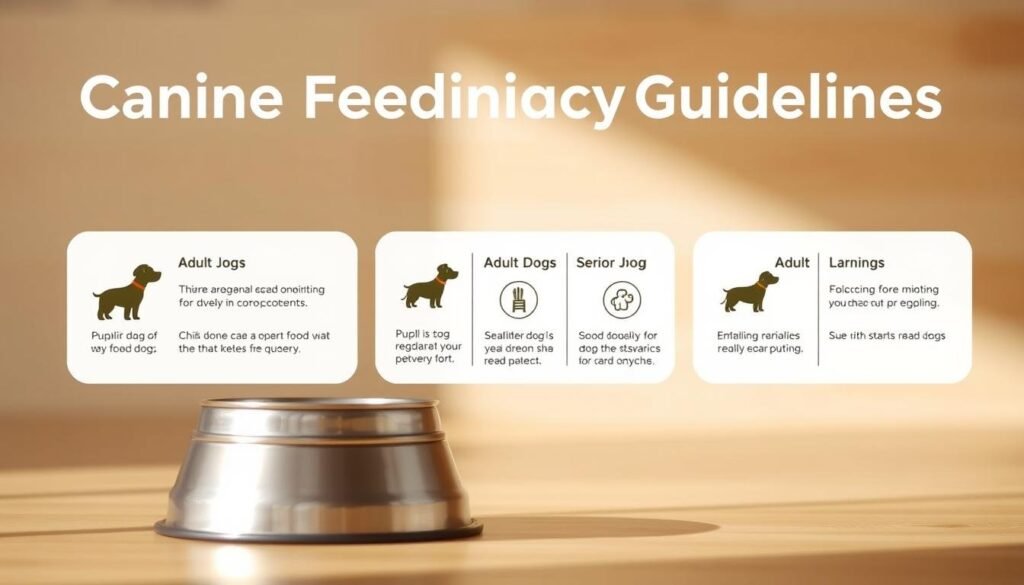As a dog owner, you’re always looking for healthy treats for your pet. You might wonder if canned sardines in olive oil are safe for them.
Sardines are packed with nutritional benefits. They have omega-3 fatty acids, protein, and vitamins and minerals. But, it’s key to think about the safety and benefits of giving them to your dog.
In this article, we’ll dive deep into the topic. We’ll talk about the good and bad sides of giving your dog canned sardines in olive oil. This will help you decide if it’s a good choice for their diet.
Contents
- 1 The Nutritional Profile of Sardines for Dogs
- 2 Can Dogs Eat Canned Sardines in Olive Oil?
- 3 Health Benefits of Sardines for Dogs
- 4 Potential Risks and Concerns
- 5 How to Safely Feed Sardines to Your Dog
- 6 Appropriate Portions and Frequency
- 7 Alternatives to Sardines in Olive Oil
- 8 Conclusion
- 9 FAQ
- 9.1 Are canned sardines in olive oil safe for my dog to eat?
- 9.2 What are the benefits of feeding my dog sardines in olive oil?
- 9.3 How often can I feed my dog sardines in olive oil?
- 9.4 Can I feed my dog sardines in olive oil if they have food allergies?
- 9.5 Are there any alternatives to sardines in olive oil that I can feed my dog?
- 9.6 How do I choose the right type of sardines in olive oil for my dog?
- 9.7 Can I feed my dog canned sardines in olive oil as a replacement for their regular meals?
- 9.8 What are the risks associated with feeding my dog sardines in olive oil?
The Nutritional Profile of Sardines for Dogs
Sardines are full of nutrients that boost your dog’s health. They are rich in protein, omega-3 fatty acids, and vitamins and minerals.
Protein Content in Sardines
The protein content in sardines is very high. This makes them great for dogs needing more protein for muscle growth and health.
| Nutrient | Amount per 100g | Benefits |
|---|---|---|
| Protein | 25g | Supports muscle health |
| Omega-3 Fatty Acids | 1.5g | Promotes healthy skin and coat |
| Calcium | 300mg | Essential for bone health |
Sardines are also packed with omega-3 fatty acids. These are key for a dog’s skin, coat, and heart health. Adding sardines to your dog’s diet can greatly benefit their overall health.
Can Dogs Eat Canned Sardines in Olive Oil?
As a dog owner, you might wonder if canned sardines in olive oil are safe for your pet. The answer depends on several factors. These include potential allergens or toxins and your dog’s health needs.
Canned sardines are full of nutrients. But, when packed in olive oil, there are extra things to think about. Olive oil isn’t toxic to dogs. But, eating too much can upset their stomachs.
Potential Allergens or Toxins
Some dogs might be allergic to fish or sensitive to certain ingredients in canned sardines. Also, there’s a small risk of mercury toxicity, even though it’s lower in sardines than in bigger fish.
- Check the ingredient list for any potential allergens.
- Be aware of the mercury content, although sardines are generally considered safe.
- Monitor your dog’s reaction to new foods, including canned sardines in olive oil.
It’s very important to talk to your vet before changing your dog’s diet. This is especially true if they have health problems.
Health Benefits of Sardines for Dogs
Sardines are great for dogs, improving their skin, coat, and heart health. They are packed with nutrients that make them a fantastic addition to your dog’s diet.
The omega-3 fatty acids in sardines are key for your dog’s skin and coat. They reduce inflammation, promote healthy skin, and make your dog’s coat shiny and healthy.
Cardiovascular Health
Sardines also boost your dog’s heart health. The omega-3s in them lower triglycerides, reduce blood pressure, and prevent blood clots. All these help keep your dog’s heart healthy.
Adding sardines to your dog’s diet can greatly improve their health. With their rich nutrients, sardines support your dog’s overall health. They are a nutritious and healthy treat for your furry friend.
Potential Risks and Concerns
Sardines can be good for your dog’s diet, but there are risks. One big worry is mercury in sardines. Even though sardines have less mercury than big fish, they still have some.
Overconsumption Risks
Eating too many sardines can upset your dog’s diet balance. Sardines are full of omega-3 fatty acids, which are good but can be bad in too much. Too much omega-3 can cause stomach problems or mess with blood clotting.
https://www.youtube.com/watch?v=IkpDujkdTPo
| Potential Risk | Description | Precaution |
|---|---|---|
| Mercury Content | Sardines may contain low levels of mercury. | Limit sardine intake to avoid mercury buildup. |
| Overconsumption | Excessive omega-3 intake can cause health issues. | Feed sardines in moderation, balanced with other nutrients. |
| Olive Oil Content | High calorie intake from olive oil can lead to weight gain. | Monitor overall calorie intake and adjust as necessary. |
To avoid risks, feed sardines in olive oil carefully. Always check the label for mercury levels and pick products with less mercury. Also, mix your dog’s diet with other foods rich in nutrients to prevent too much of one thing.
How to Safely Feed Sardines to Your Dog
Feeding sardines to your dog can be safe and healthy. Sardines are packed with omega-3 fatty acids and protein. But, it’s important to choose the right kind.
Choose sardines packed in water or their own juice, not olive oil. Olive oil isn’t bad for dogs, but too much can cause pancreatitis. Make sure the sardines are “sustainably sourced” and “low in mercury” for quality.
Preparation and Serving
Before giving sardines to your dog, drain the liquid and rinse them. You can give them as a treat or add them to their meals. Here are some serving tips:
- Start with a small amount to check for any signs of allergy or intolerance.
- Mix sardines with other nutrient-rich foods for a balanced meal.
- Use sardines as a topping for your dog’s kibble to add flavor and nutrition.
By following these guidelines, you can safely add sardines to your dog’s diet. They’ll get a boost of nutrients.
Appropriate Portions and Frequency
Knowing the right amount and how often to feed sardines to your dog is key. It’s important to understand the correct portions and frequency for a safe diet.
When deciding on portion size, think about your dog’s size, age, and health. Small dogs (under 20 pounds) can have 1-2 sardines. Medium dogs (21-50 pounds) can have 2-3 sardines. Large dogs (51+ pounds) can have 3-4 sardines.
Feeding Frequency Guidelines
How often to feed sardines depends on your dog’s needs. A good rule is to feed them 1-2 times a week.
| Dog Size | Portion Size | Feeding Frequency |
|---|---|---|
| Small (under 20 pounds) | 1-2 sardines | 1-2 times a week |
| Medium (21-50 pounds) | 2-3 sardines | |
| Large (51+ pounds) | 3-4 sardines |
Always consult with your veterinarian to determine the best feeding schedule for your dog.

By following these guidelines, you can ensure your dog gets the health benefits of sardines safely.
Alternatives to Sardines in Olive Oil
Looking into other fish options and non-fish alternatives can be good for your dog’s diet. If you want to add variety or change things up, there are many choices.
Salmon and mackerel are full of omega-3 fatty acids. They can be a great addition to your dog’s meals. These fish offer similar health benefits to sardines when prepared right.
Non-Fish Alternatives
For non-fish options, think about flaxseeds or chia seeds. They’re packed with omega-3 fatty acids and can boost your dog’s diet. You might also consider chicken or turkey for a different nutritional mix.
When adding new foods, do it slowly to avoid upset stomachs. Always talk to your vet before big changes in your dog’s diet.
Conclusion
Feeding your dog canned sardines in olive oil can be a great choice. Sardines are packed with omega-3 fatty acids, protein, and important vitamins and minerals.
When given in small amounts, sardines can boost your dog’s health. This includes heart health and a shiny coat. Always pick sardines that are low in mercury and don’t have added salt or preservatives.
Knowing the good and bad of sardines helps you make smart choices. This way, you can ensure your dog stays healthy and happy.
FAQ
Are canned sardines in olive oil safe for my dog to eat?
Yes, canned sardines in olive oil can be safe for dogs. But, make sure they don’t have onions or garlic.
What are the benefits of feeding my dog sardines in olive oil?
Sardines in olive oil are good for your dog. They have omega-3 fatty acids, protein, and nutrients. These can make your dog’s skin, coat, and heart healthier.
How often can I feed my dog sardines in olive oil?
How often depends on your dog’s size, age, and health. Feed them 1-2 times a week. Always check with your vet for the best advice.
Can I feed my dog sardines in olive oil if they have food allergies?
If your dog has allergies, start with small amounts of sardines. Watch for any bad reactions. Talk to your vet about what’s best.
Are there any alternatives to sardines in olive oil that I can feed my dog?
Yes, you can try salmon or anchovies. Or, non-fish options like sweet potatoes or green beans. They offer similar health benefits.
How do I choose the right type of sardines in olive oil for my dog?
Choose sardines low in mercury and without added salt. Make sure the olive oil is safe for dogs.
Can I feed my dog canned sardines in olive oil as a replacement for their regular meals?
No, sardines in olive oil should not be a meal replacement. They should be a supplement, as your vet advises.
What are the risks associated with feeding my dog sardines in olive oil?
Risks include mercury poisoning, too much fat, and allergies. Always talk to your vet to avoid these problems.

Derrick Wilcox is a certified canine behaviorist with over 12 years of experience at Happy Paws Animal Clinic and Pawsitive Training Center, helping pet owners ensure safer, healthier, and happier lives for their dogs.



